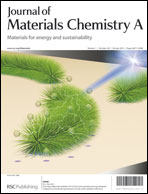Achieving polyhedral nanocrystal growth with systematic shape control
Abstract
From our series of studies on the syntheses of polyhedral gold, Cu2O, Ag2O, PbS, Au–Cu2O, and Au–Pd nanocrystals with systematic shape evolution, we have gained important insights into the growth mechanism and factors controlling the particle morphologies. In the formation of metal nanocrystals, dendritic or branched structures have consistently been observed at the initial moments of the metal nanoparticle growth process. All evidence has indicated that tuning the reaction rates can lead to particle shape changes. Varying the amount of reducing agent used and partial halide ligand replacement of the metal precursors can tune the reduction rate and yield nanocrystals with shape evolution. For nanocrystals formed by precipitation reactions, lowering the reaction rates by decreasing the equilibrium constants through the use of suitable metal precursors and equilibrium shifting reagents, polyhedral nanocrystals can be obtained. These nanocrystals exposing different surfaces have shown very interesting facet-dependent physical and chemical properties.


 Please wait while we load your content...
Please wait while we load your content...